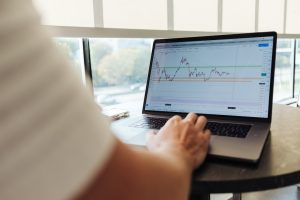Forex trading is an exciting and lucrative venture, but it can also be quite stressful and time-consuming. One way to ease the burden is by using pending orders. Pending orders give traders the ability to enter the market at a specific price level and can be set up in advance, so traders don’t have to constantly monitor the markets. In this article, we will explain how to place pending orders in forex.
What are Pending Orders?
Pending orders are a type of order that allows traders to buy or sell an asset at a specific price level. They are used to automate trades and can be set up in advance, so traders don’t have to constantly monitor the markets. Pending orders are also useful for traders who are not available to enter a trade at the exact moment they want to enter the market.
There are four types of pending orders in forex:
1. Buy Stop Order: A buy stop order is used to enter the market at a higher price than the current market price. This type of order is used when a trader believes that the market will continue to rise after reaching a certain level.
2. Sell Stop Order: A sell stop order is used to enter the market at a lower price than the current market price. This type of order is used when a trader believes that the market will continue to fall after reaching a certain level.
3. Buy Limit Order: A buy limit order is used to enter the market at a lower price than the current market price. This type of order is used when a trader believes that the market will bounce back after reaching a certain level.
4. Sell Limit Order: A sell limit order is used to enter the market at a higher price than the current market price. This type of order is used when a trader believes that the market will drop after reaching a certain level.
How to Place a Pending Order in Forex?
Placing a pending order in forex is a simple process. Here are the steps:
Step 1: Open a Trading Platform
The first step is to open a trading platform. Popular trading platforms include MetaTrader 4 and 5, cTrader, and TradingView. Once you have opened a trading platform, you will need to log in to your trading account.
Step 2: Choose a Currency Pair
The second step is to choose a currency pair you want to trade. You can choose from a variety of currency pairs, including major currency pairs like EUR/USD, GBP/USD, and USD/JPY, as well as minor and exotic currency pairs.
Step 3: Choose a Pending Order Type
The third step is to choose a pending order type. You can choose from the four types of pending orders we discussed earlier: buy stop, sell stop, buy limit, and sell limit.
Step 4: Set the Price Level
The fourth step is to set the price level at which you want to enter the market. For example, if you want to enter the market at a higher price than the current market price, you would set a buy stop order. You would then set the price level at which you want to enter the market.
Step 5: Set the Stop Loss and Take Profit Levels
The fifth step is to set the stop loss and take profit levels. Stop loss and take profit levels are used to manage risk and protect your profits. The stop loss level is the price level at which you want to exit the market if the trade goes against you. The take profit level is the price level at which you want to exit the market if the trade goes in your favor.
Step 6: Set the Expiration Time
The sixth step is to set the expiration time. The expiration time is the time at which the pending order will expire if it is not triggered. You can set the expiration time to a specific date and time or choose to keep the order open until it is triggered or canceled.
Step 7: Place the Pending Order
The final step is to place the pending order. Once you have entered all the necessary information, you can place the pending order by clicking the “Place Order” button. Your pending order will then be placed and will remain open until it is triggered or canceled.
Conclusion
Pending orders are a useful tool for forex traders who want to automate their trades and reduce their workload. By understanding the different types of pending orders and how to place them, traders can take advantage of market opportunities without having to constantly monitor the markets. Remember to always set stop loss and take profit levels to manage risk and protect your profits. Happy trading!






